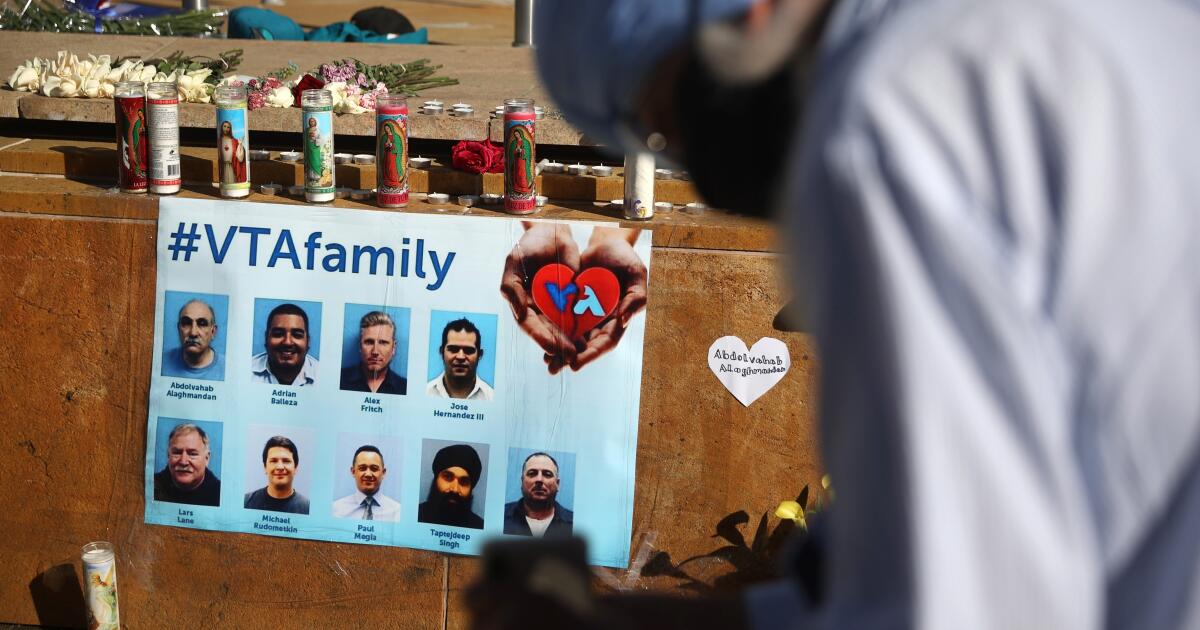
Beginning this month, California businesses will be required to have plans in place to prevent violence in the workplace.Senate Bill 553, signed by Gov. Gavin Newsom last fall, requires that employers develop plans to protect workplaces from foreseeable threats of violence, which can range from bullying and harassment to active shooter and hostage situations. Under the law, employers were to have these comprehensive plans in place by July 1.Here’s what you should know about the new law:Who pushed for the workplace violence prevention law, and why?
State Sen. Dave Cortese (D-San Jose), who wrote the legislation, said he began looking into regulating workplace violence after a major shooting in 2021 at a light-rail yard roiled his district. In the incident, an employee killed nine colleagues at the Santa Clara Valley Transportation Authority before taking his own life.Surveying the scene soon after the shooting, Cortese said he felt there could have been a clear plan for how workers might respond in such a situation. “It would have saved lives,” he said.Cortese said the requirements outlined by the law took cues from a regulation the California Division of Occupational Safety and Health had been in the process of developing. Their safety standard, however, given their lengthy rule-making process and bureaucratic delays, probably would have taken several more years to get final approval.More than half of such shootings in 2021 occurred in places of commerce, including grocery stores and manufacturing sites, according to the FBI.SB 553 was backed by several unions, among them the United Food and Commercial Workers Western States Council. The union sought a law that would help address what it described as a rash of violent attacks at grocery stores and pharmacies, as workers were being pressured by their employers to crack down on shoplifting.Grocery and other retail workers who interact with the public have long worried about violence in the workplace. Notably, they faced harassment and at times assault from customers who refused to comply with mask mandates in the early years of the COVID-19 pandemic. Fast-food workers also have complained of violent and dangerous customers.Did anyone oppose the legislation? If so, why?
Industry groups such as the National Retail Assn. had vehemently opposed SB 553, arguing the paperwork would be overly burdensome for businesses.They also took issue with a provision the bill had in its early stages that prohibited businesses from requiring nonsecurity employees to confront shoplifters and active shooters. That language was later removed. Eventually, the trade groups dropped their opposition.What exactly is required under the law?
Legal experts said many companies had already started loosely addressing workplace violence concerns as mass shootings and other violent incidents dominated headlines over the years. The law helps to clarify employers’ obligations in this arena, experts said.The law defines four types of workplace violence employers should try to prevent: violent action by a third-party person with no real reason to be at the worksite — essentially, a stranger showing up and harming an employee; violence by parties that are entitled to be there, such as customers, clients, patients or other authorized visitors; violence committed against employees by another employee; and violence by a third party who has a romantic or other personal relationship with an employee.Under the law, most California businesses with at least 10 employees are required to have a policy document identifying potential violence and plans to deal with it — either as a standalone document, or as part of an existing injury and illness prevention policy.They must also make workers aware of the violence prevention plan through annual training, and maintain a log of incidents of violence over a minimum of five years.What else should I know about the law?
The law makes it easier for employees — or the unions that represent them — to get temporary restraining orders if they are threatened by a coworker or someone else in the workplace.“That’s a big thing — most employees don’t get to choose who they work with or what happens at work,” said Ian A. Wright, a labor and employment attorney at Alston & Bird. “It gives employees an additional form of protection that they can go and seek themselves.”Noncompliance could be met with civil penalties, and businesses that haven’t yet implemented the law are already several days past the deadline.“My advice would be to get it done as soon as possible,” Wright said.







